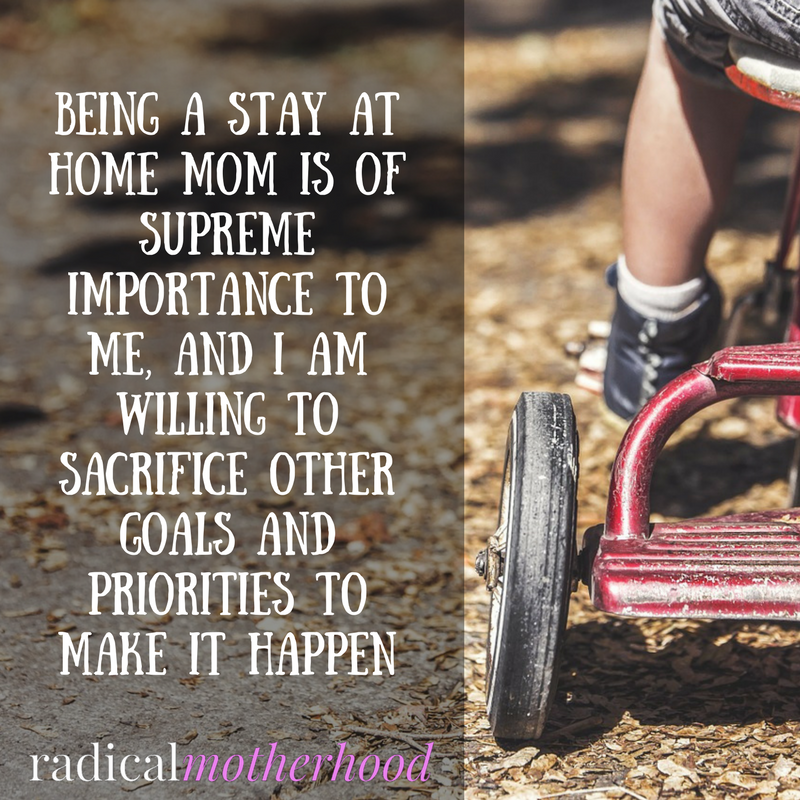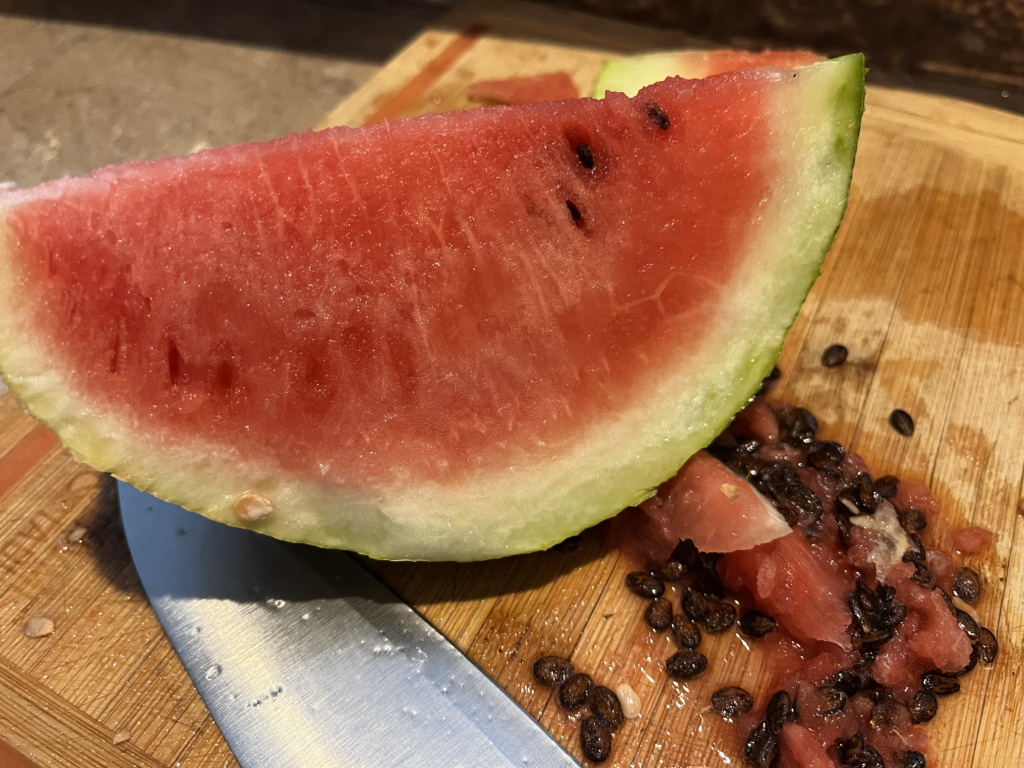
One of the top reasons my husband and I started a vegetable garden was to save money. We spend a horrific amount of money on food, more than any other expense by hundreds of dollars a month. It seemed obvious that gardening would put us ahead, at least a little bit. How hard could it be to grow a few plants? We had visions of harvesting pounds and pounds of tomatoes, potatoes, garlic, basil, melons, squash…
Our Gardening Vision
The more we thought about it, the more excited we got. We could get the kids involved! What a great homeschooling opportunity. Think of all the garden chores they could do, all the science they could learn! We read up on all of the health benefits of growing your own food. And food preservation! My gut microbiome improved just thinking about it. Planting a garden was going to solve basically all of the problems we were struggling with as a family.
Our Gardening Reality
I can’t remember what exactly we planted that first year, but it didn’t go according to plan. We made every possible mistake and ended up with a few servings of (barely) edible vegetables. This is how it went:
- We planted a bunch of seeds in trays indoors in the early spring. They seemed gangly, almost sickly, but they survived long enough to make it to planting time.
- We attempted to “harden off” the little plants outside before sticking them in the ground. Most of them died immediately.
- We planted the remaining plants, which were promptly eaten by rabbits.
- Undeterred, we went to the store and bought plants. Nice, big, healthy-looking plants.
- We planted those plants, some of which actually survived.
- We happily watered the plants for a few weeks, admiring their growth and waiting for vegetables to appear.
- Then, the weeds came. So many weeds.
- We pulled the weeds. Our kids pulled the weeds. For every weed we pulled, a dozen more appeared. Sometimes, we accidentally pulled out our precious plants.
- We gradually lost interest in the garden. There were so many bugs! There were so many weeds! It was hot. We had too many bug bites. The pool was open. We got busy with other things.
- Vegetables finally started to appear, but they looked funny. The tomatoes were all black on one end. The melons started to rot before they even got ripe. We couldn’t seem to pick the cucumbers before they got huge and seedy. Who even wanted to eat this stuff? Wasn’t spaghetti sauce just a couple of dollars a jar?
- We harvested what we little we could. Ate even less than that. Piles of beautiful beans, painstakingly removed from their pods, grew shoots and got moldy in bowls on the counter. We lamented that we would have been better off sticking to the produce section at the grocery store.
- As the memories of our harvest faded, and spring seed catalogs started arriving, hope blossomed once more. Out came the seed trays…
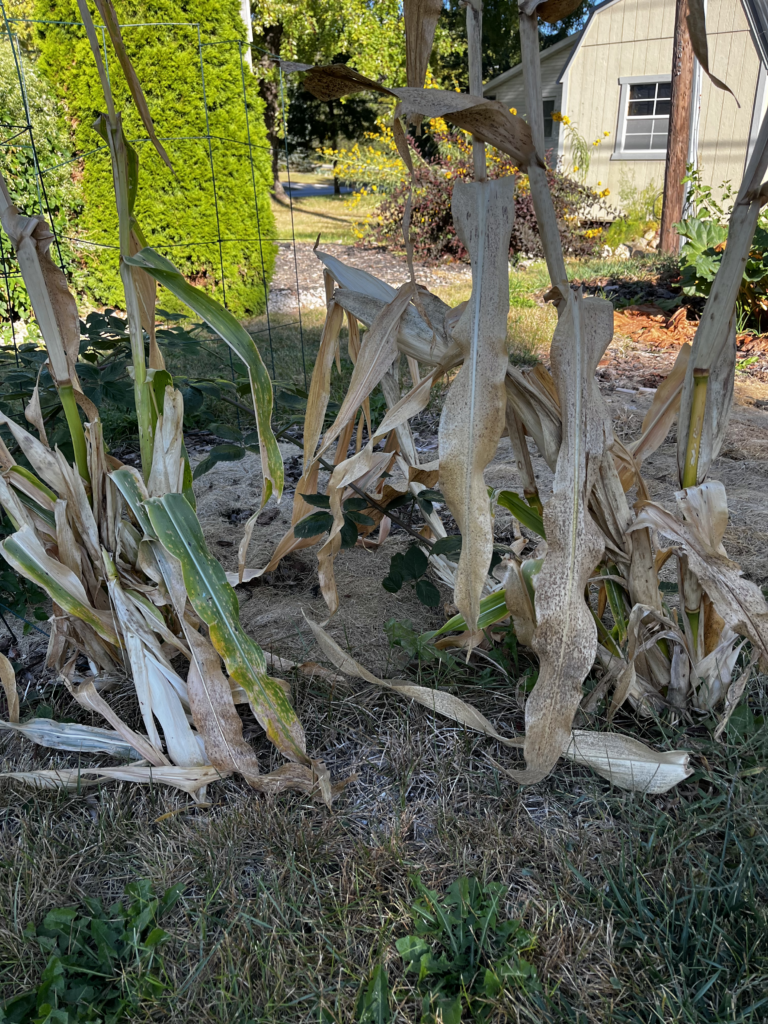
Our Mistakes
Mistake #1: Assuming that gardening is easy or intuitive.
It’s not. It’s just not. Nothing about gardening is easy.
Well, I guess I should qualify that. There are those of you who grew up in a farming or gardening family, and you probably absorbed a lot of knowledge just by being around it. You might have watched your mom prune raspberry bushes or helped her shell peas. You remember what the garden looked like; what plants were in it, how far apart they were. How to keep the bugs and weeds away. If that’s the case, perhaps it is easy to start your own garden as an adult.
The rest of us absolutely have to do some research up front, or our gardens will fail and we’ll end up losing a lot of time and money. Do you know what hardiness zone you’re in? What your last frost date is in the spring? Whether your soil is pH balanced? If you want to actually eat anything out of your garden, you have to take it seriously. The more you learn up front, the less heartache you’ll have at the end of the season.
Before you get started, look at your local university extension office for gardening tips. Talk to friends who have gardens. Websites that sell seeds and plants, like Bonnie Plants, Burpee, and Seed Savers, have great resource libraries online.
Set reasonable expectations for your first couple of years. When you read about a technique or plant that’s great for beginners, use it! Starting with a couple of raised beds, or even a couple of pots on the patio, will help you figure out what you like to grow (and eat).
Mistake #2: Choosing vegetables because they look cool.
One year, we grew the most beautiful beans. They were pink and white speckled, and I loved the way they looked. However, they never made it into a jar or onto a plate, because we had no idea how to store or cook them. Also, no one at our house under the age of 40 will eat beans. I think that planting a gourd that looks like a snake, or a purple carrot, or a tiny watermelon, is a fun way to keep the garden interesting. However, the bulk of your planting needs to be vegetables and fruits that meet these criteria:
- They grow well in your area.
- Your family enjoys eating them.
- You can realistically preserve and store what you don’t immediately need.
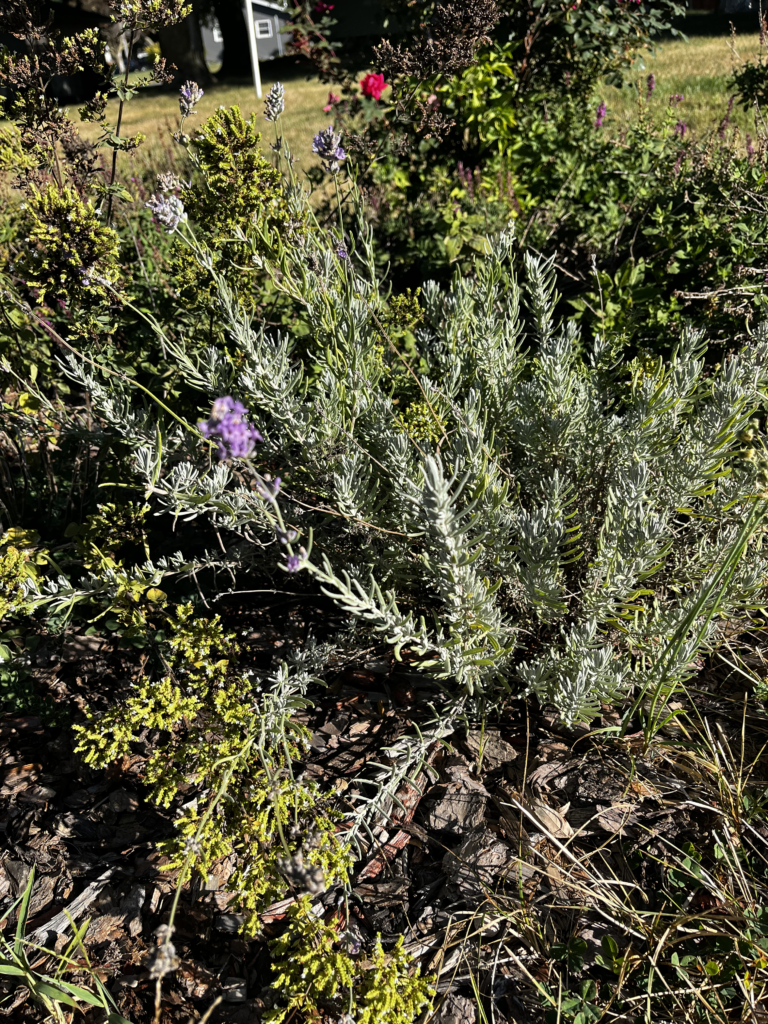
Mistake #3: Trying to get by with the wrong tools.
I am a big believer in winging it. If I can’t find the right tools, or the instructions seem overly complicated, I improvise. My instinct is to just get by with what’s on hand and get the project finished. One year, we wanted to start seeds in the basement, but grow lights and heating mats were way too expensive, and setting it all up seemed like a hassle. So, we just put the seed trays on a shelf with a fluorescent light and hoped for the best. A few weeks later, all of the plants were dead.
If you want to have a successful garden, you have to use the right tools. That doesn’t mean you have to buy a bunch of expensive equipment, but plants – especially young plants – are fragile things. I’m far from an expert, but there are lots of suggestions online for essential gardening tools and equipment. Think about:
Getting started: What will I need to start my seeds? (seeds, seed trays, seed starting mix, fertilizer, light source, heat source, shelving)
Planting: What will I need to plant my seeds? (shovel, spade, rake, trowel, soil, measuring tool, materials to build raised beds)
Maintaining and Harvesting: What will I need for growing, pruning, weeding, and harvesting? (fertilizers and soil amendments, pest deterrents, pruning shears, hoe, weeding tool, garden knife)
If you know some gardeners, see if one of them could loan you some tools to get started. Better yet, see if they could come over with a few of their tools and help you do a little planting. As with any craft, people are usually thrilled to share what they know. Just be sure they have time to get their own planting done as well. Keep an eye out at the thrift stores and garage sales.
Mistake #4: Not learning about bugs, plant diseases, and soil problems.
In your area, you probably have a few specific pests and diseases that are common. The downside to that is that you’ll probably have to deal with them just like everyone else. The upside is that the remedies are bound to be well-known throughout your gardening community. The same is true of common soil problems. If you educate yourself up front AND keep a close eye on your plants, you’re much more likely to end up with a healthy harvest.
I have never done anything to ascertain or improve the quality of the soil in my garden. That’s probably bad. If you really want to get the best yield from your soil, soil testing is a great place to start. My state extension office doesn’t offer soil testing for home gardens, but many of them do. This link to the ISU extension office lists several resources for soil testing.
One way to minimize your risk of bugs and disease is to plant a diverse crop. Don’t plant just one variety of tomatoes, plant three. Plant several different types of vegetables so that if it’s a bad year for, say, zucchini, you still have some other plants that do well.
Mistake #5: Not learning how to deal with weeds.
I decided several years ago that I wasn’t going to use any chemicals on my lawn and garden anymore. That’s great, right?
Well, yes, but I also despise pulling weeds and have never put much effort into preventing them. So, every year, my entire yard is absolutely blanketed in weeds. And along with the weeds comes an infestation of all kinds of biting insects. The garden eventually becomes untouchable, and the good plants are overcome by weeds, pests, and disease. By August, I can’t even look at it.
Solving your weed problem
The solution to weeds? I’ve looked all over the internet, and unless you’re willing to use chemicals, vinegar, or boiling water on your yard, you simply have to pull them out. I do have a weed barrier under most of my garden and landscaping areas, but it’s not actually doing much. Most of the time, weeds either just come up through it or sprout up on top of it. No solution is perfect; the bottom line is that you will have weeds, and you will have to spend some time and effort getting rid of them.
Weeding is terrible, but here are a few tips to make it better:
- Do most of your weeding in the early morning, when it’s cool.
- Figure out when each area of the garden is shaded, and pull weeds then (morning is still best, but shade is helpful too).
- If it rains, go out and pull weeds as soon as it stops. The weeds come up much better when the soil is wet.
- Don’t wear gloves unless you have to. I think gloves make it harder to grab the weeds and get the whole root.
- Wear bug spray, long sleeves, pants, and socks if possible. Anything to keep the bugs off of your skin.
- Pull weeds once a week; get it on your schedule and stick to it. The longer you put it off, the worse it’s going to be.
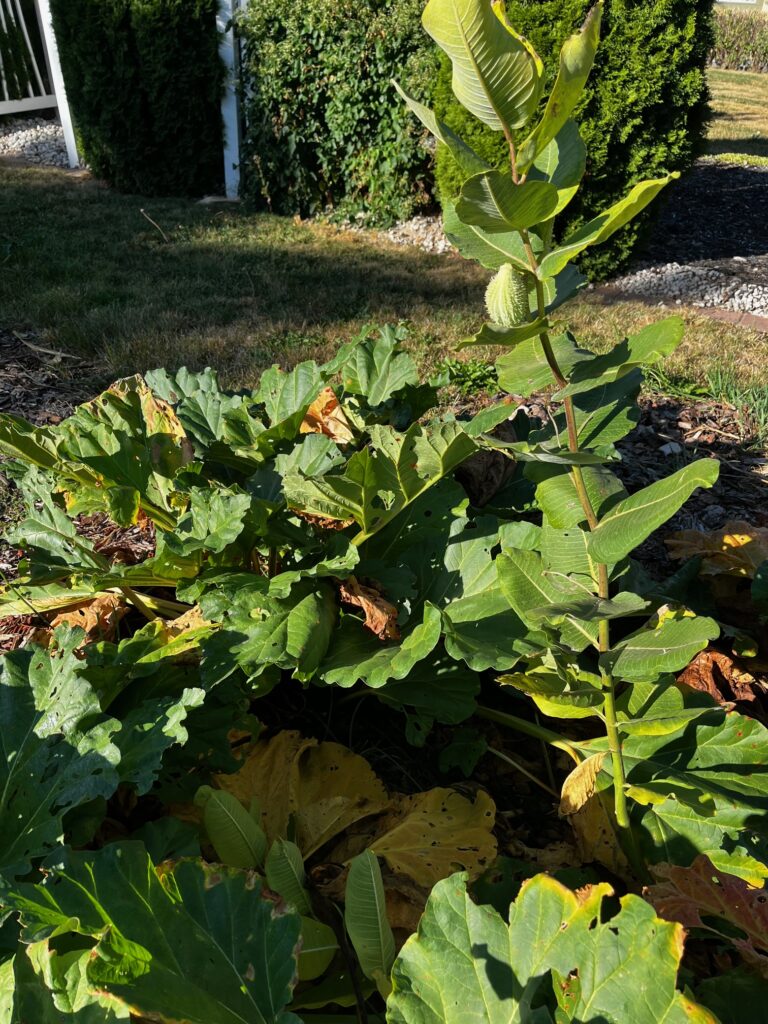
Mistake #6: Giving up.
I’ve never had a successful harvest without giving the garden regular attention. You have to keep it watered, get rid of the pests and disease, and pull the weeds if you want anything to eat at the end of the season. Is it okay to abandon the garden? Yes. I’ve done it many times. But you probably won’t be eating much from a garden that’s been neglected for weeks on end. If nothing else, drag yourself out there to water it every other day and pull weeds when the weather is nice. Send the kids out when they’re bored and tell them to pick you something that looks ripe (my kids love picking stuff).
Now, just because you didn’t harvest 80 pounds of tomatoes doesn’t mean you didn’t gain anything from your garden. Even a failed garden can be a successful teacher. Don’t let a bad year get you down!
Mistake #7: Not understanding food preservation.
Probably my worst gardening memory ever is about potatoes. We were so proud of our pretty green potato plants as they grew. We were even more impressed when actual potatoes grew under the ground and we were able to harvest them. Then, we put them in all in a box in the basement, where they rotted. We didn’t eat a single one.
We didn’t know anything about the curing process, in which you lay the potatoes in a single layer with lots of ventilation for several days. Curing the potatoes actually thickens the skin and heals small cuts and bruises. Putting them all in a box together turns them into mush.
It doesn’t do any good to grow 50 pounds of potatoes if they all go bad in your basement.
I was intimidated when I first thought about canning anything, but it turns out that water bath canning is pretty simple (time consuming and precise, but simple). Many fruits and vegetables can be frozen, or blanched (boiled briefly) and then frozen. Winter squash, potatoes, and onions can cure and be stored in a cool room all winter long. Before you plant anything, figure out the simplest way to preserve it, and have a plan ready when harvest comes.
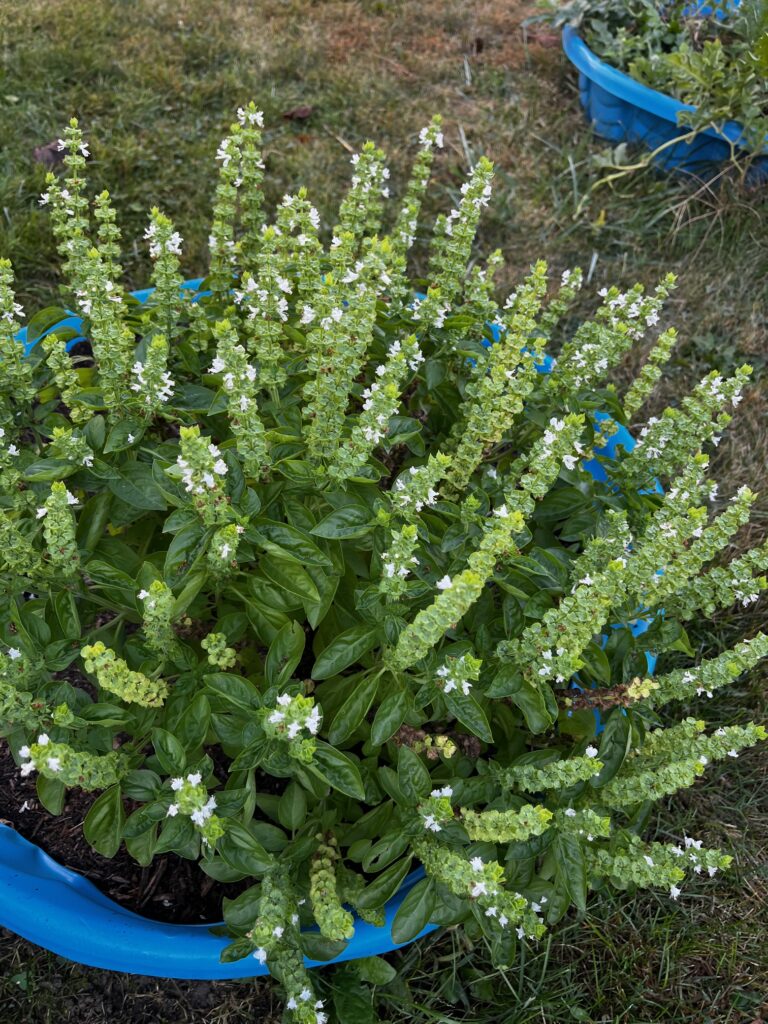
So, Does Gardening Save You Money?
So far, gardening hasn’t saved me a ton of money. However, I’ve read accounts of people saving hundreds of dollars a month by growing their own food. I’ve read books and watched YouTube channels about people who grow ALL of their own food AND in an urban setting. So it is possible…I’m just not anticipating ever doing that myself.
Much as I want to slash my grocery bill, I think that saving money is actually the least rewarding aspect of gardening. If you’re primarily motivated by the money-saving potential of your garden, I think you’ll be frustrated for the first couple of years. There’s so much to learn that I just can’t imagine stocking up hundreds of pounds of food right away.
Happily, there are many other benefits to gardening:
- knowing where your food comes from
- choosing more flavorful and nutritious varieties than you can get in the store
- learning new and valuable skills
- meeting other gardeners and building community
- teaching your children about gardening and through that, how work hard and keep something alive
- the pure enjoyment of choosing plants, caring for them, and watching them develop
Let’s Get Started!
Now is the time to start planning your garden, saving up for equipment, and getting your backyard ready. Think about:
- What’s your initial garden budget?
- Where will you put the garden?
- Do you have time to get the soil dug up and composted this fall?
- Will you use raised beds? Pots? Trellises? Cages?
- Will you start seeds indoors?
- What grows well in your area?
- What does your family like to eat that you could realistically grow?
- Who do you know who already gardens?
- Where is your nearest university extension office?
Happy gardening! I hope to share more about our garden this year as we go through the planning stages. Meanwhile, share your favorite gardening tips, experience, and produce in the comments!

